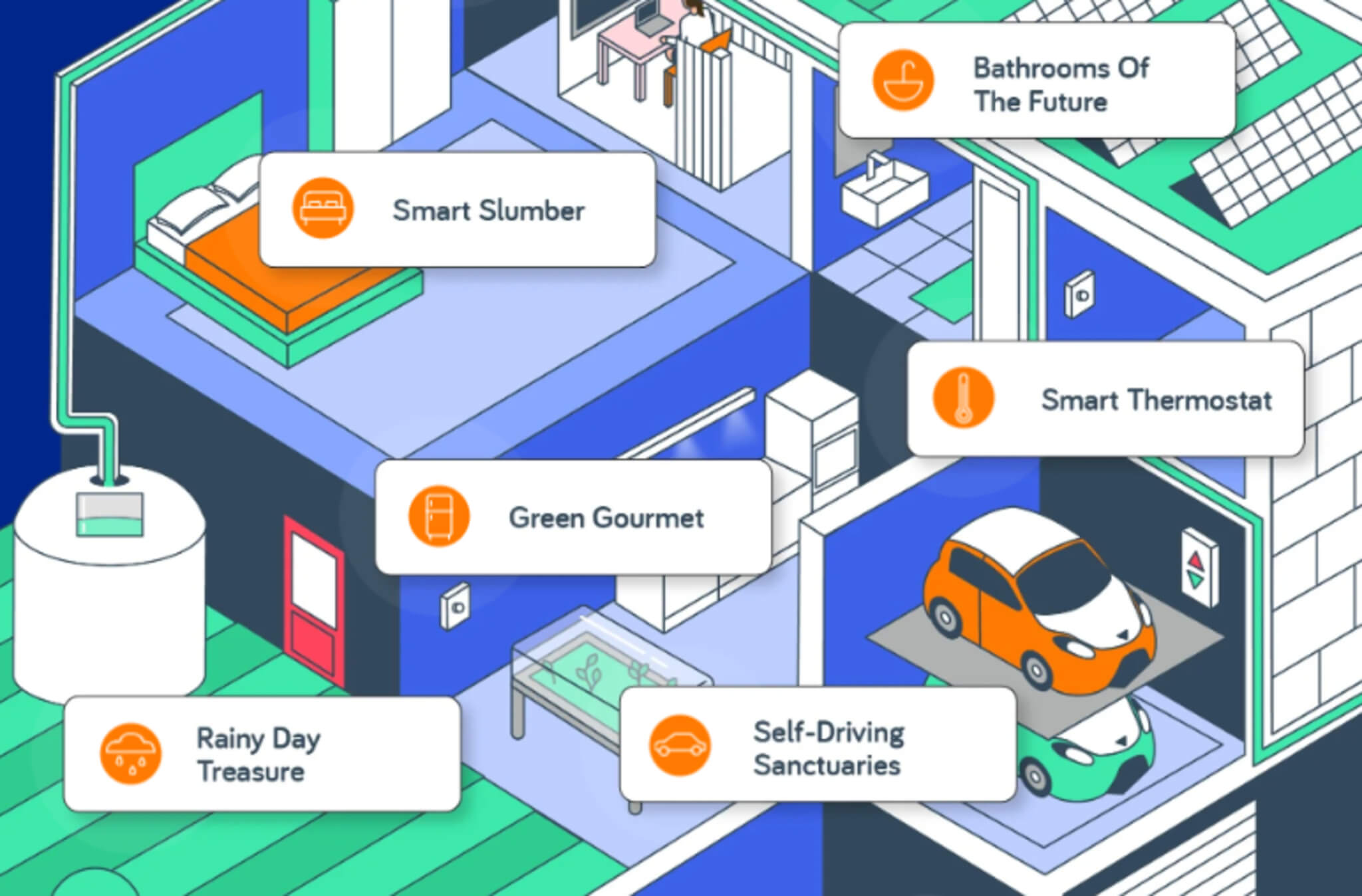LONDON — The home of the future may surround you with smart technology — from the bedroom to the garage, a futurologist explains. In a new image of what these high-tech houses could look like, Dan Sodergren details every smart device that could one day handle all aspects of life at home.
The home is kitted out with smart curtains, a fridge that restocks itself, and thermostats that residents can operate outside their house. Sodergren gave his insight into what the home of the future may look like, including how hybrid workspaces will function, and why automated garages will become “self-driving sanctuaries.”
The concept comes after research of 2,000 adults in the United Kingdom found that 75 percent of homes now contain some kind of smart device or appliance. The average household that has invested in this tech has nine electronic devices and three pieces of smart technology.
The survey, commissioned by Hive to mark 10 years since it launched its smart thermostat in 2013, also found these tech gadgets in 21 percent of U.K. homes.
“The cultural shift in the UK towards environmental conservation and digitalization is driving investment in smart tech,” Sodergren says in a statement from SWNS.
“These tools, such as the smart thermostat, give Brits superior control over their homes. Enhanced energy efficiency, home comfort, and an easy-to-capture outlook on energy usage are proliferating the adoption of such smart devices.”

The study also found 18 percent of smart homes have lighting that can be controlled using voice commands or an app. Meanwhile, one in 10 have a smart washing machine and 54 percent have at least one smart speaker.
Respondents estimate they have spent an average of $1,500 on smart home tech in the last five years, and plan to introduce four more devices in the next half-decade. It also emerged that 46 percent are looking forward to more smart tech being developed for the home.
While 34 percent named cost saving as a reason for investing in smart tech, 11 percent cited convenience, and nine percent security and safety. The research also discovered only 20 percent of adults feel their home is “very prepared” for winter to hit, according to the figures from OnePoll.
Statistics collected from more than 10 years of Hive data claims their customers have collectively saved more than one million tons of carbon emissions from being emitted into the atmosphere – and almost $400 million collectively on their energy bills. The two million thermostat users have saved the same amount of carbon required to power over 366,000 homes annually, almost 700,000 return flights from London to JFK Airport in New York, and drive over four million car miles.
“In the next decade, smart thermostats hold tremendous potential to catalyze environmental transformations,” Sodergren adds.
“As more people look to incorporate smart technology into their homes, smart thermostats will be at the forefront of this movement. These devices not only optimize energy use but also align with the shift towards smart homes, steering us towards a future of living that’s more sustainable, digitally integrated, and efficient.”
72Point writer Rich Jenkins contributed to this report.
You might also be interested in:
- Best Smart Beds In 2023: Top 5 Systems Most Recommended By Experts
- Mushroom castles could be the fungus-filled homes of the future, scientists explain
- Best Video Doorbells: Top 5 Devices Most Recommended By Experts

